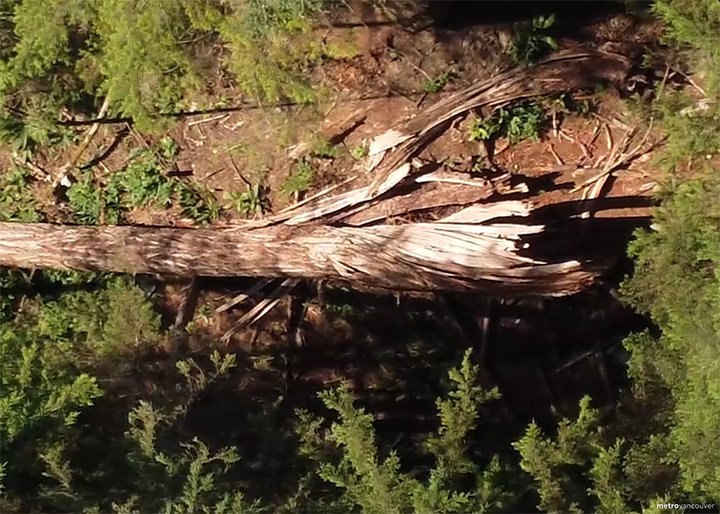
A 500-year-old Douglas fir tree that fell in Capilano River Regional Park is still a vital part of the forest ecosystem. In fact, it is more important to the forest now than it was when it was still standing.
The giant tree that towered 200 feet — with base diameter of two metres — fell down last year in a winter storm. An expert analysis has determined it was weakened by root decay. It fell with such force that it landed about 10 metres from its base in the forest.
But even though it’s been gone for a year, it’s giving back to the forest.
In many ways it is more useful as a fallen tree than as a standing one, says Robyn Worcester, a Natural Resource Management Specialist with Metro Vancouver. It will now act as a fertilizer for the forest and a safe haven for insects and small animals.
“Other plants can grow in the tree and it can give the plants a head start in our dark coastal rainforest,” she says.
Loggers were active in the area since early 1900s, but this particular tree and other Douglas firs were not cut down.
Lori Bartley, Park Interpretation Specialist with Metro Vancouver Regional parks, says the reason is that cedar was preferred by loggers at the turn of the century.
There’s an interesting explanation for the tree’s huge growth — the salmon in the nearby Capilano River.
Salmon contains a certain type of nitrogen found only in the ocean, and birds can drop chunks of salmon meat into the forest, which in turn acts as a fertilizer, enabling the growth of these trees.
“It is truly an intricate relationship that the salmon, and the trees and the rainforest have,” Bartley says.
A typical Douglas fir can live more than 750 years, and there are a few still standing tall at the Capilano River Regional Park.




Donald Patrick says
A good story …. and if we all work hard on the facts, a good story can be made on almost anything that “was’ …. how about the rocks that came off the Chief this past year and parts have become sand….. ? I.